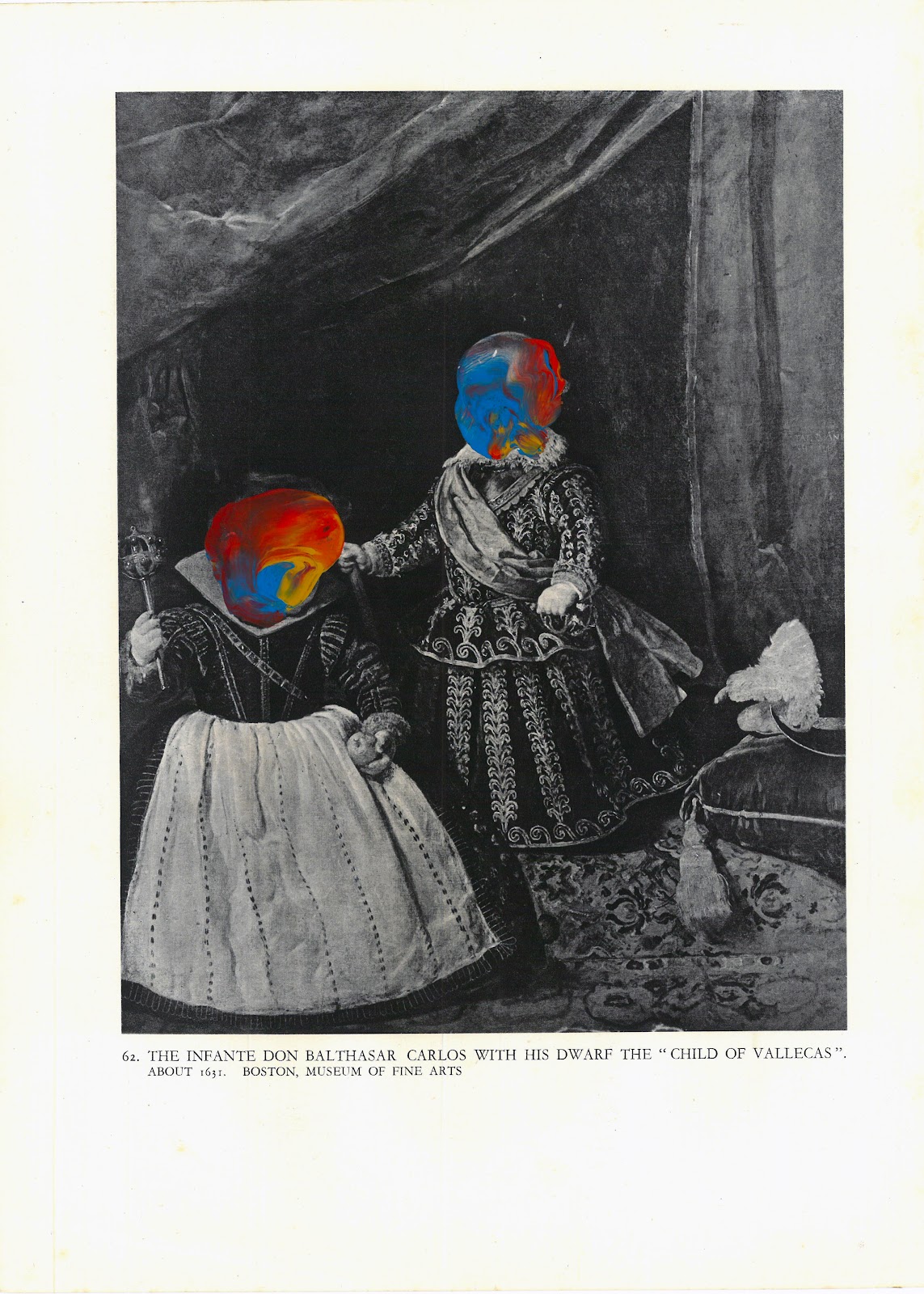 |
| "Worlds in Collision II" CAPA painting from Freddy Flores Knistoff and Rik Lina (1991) (acrylic, oil, ink, enamel and collage over canvas, 140 x 100 cm) |
When did the aesthetic-pictorial movement of "collective automatic painting" began?
Under this statement, several issues that deserve and require a small analysis to contrast certain information that sometimes appears diffuse and at the same time confusing with respect to the same origin of this movement, and for this, it is necessary to refer to Freddy Flores Knistoff, yes perhaps, the most important of the founders of this magnificent movement of automatic and experimental artists, being here where we break down and throw some small rays of light to this exciting story that in 2021 turned 30 and that it is already for 31 years. A confusing document is that of some photographs dated in November 1991 in which Rik Lina appears next to Freddy Flores Knistoff performing several automatic paintings in a gallery of art and about what appears to be an installation. The story behind these photographs is very interesting since it turns out that Freddy and Rik along with other invited artists (called in the publication as Droomschaar artists, something completely wrong, since they only participated in the publication but were not artists linked entirely to this anarchist-surrealist collective, perhaps in exception of Rik Lina) went to visit the exhibition of the Automatic Swedish-German artist K. R. H. Sonderborg at the Boër Gallery of Hannover and in which the same painter was going to perform a performance but that for reasons we unknown, the artist in question could not attend and were Rik and Freddy who offered to work on the arranged material. All in all, that was never planned and did not paint collectively but only painted "automatically" for saying it in a way. This vanishes the story behind these photographs.
One realises that the more one digs, the more one finds talismans that one has to look at closely, and that is what is happening with the history of CAPA, its foundation, which until now had remained hidden. And the more one digs, the more one realises that this movement of artists that arose in Amsterdam would never have arisen if it had not been for the activity of Freddy Flores Knistoff in his conversations with Rik Lina about automatism, Freddy himself tells us that they got together and created automatic painting, these conversations being the fruit of the discovery if perhaps by chance the objective of the foundation of Collective Automatic Painting, painting in this way was never planned. To this must be added that Freddy had already been working under experimental precepts that linked him to Modificationism and that from the beginning he promoted this career through the experience he had of other pictorial movements such as CoBrA, Roberto Matta, North American Abstract Expressionism and Modificationism (called in other ways according to its subject matter and application - Appropriationism, Ready Made, Interventionism, among others). It is also interesting to note that CAPA did not start out as CAPA, in fact, as Freddy tells us, it never presented itself as something closed or as an indissoluble group of artists, but quite the opposite, as a transversal and free space for the intellectual exchange of ideas linked to painting and automatism and that this "name" arose only to label the group of artists who worked at a key moment in the history of Collective Automatic Painting and that was in the exhibition "Phases-Surrealismo e Contemporaneidade del Museo de Arte Contemporânea de São Paulo en Brasil en 1997" curated by the critic Daisy Peccinini, which also labelled the group of artists under the title of "the new CoBrA", the first exhibition to refer to "CAPA". All in all, an exhibition which, as is well known, coincided with the bifurcation of its members Freddy and Rik, displacing Rik Lina within the parameters of International Surrealism, rather than Automatic Painting itself, and Freddy with his interests linked to "Modificationism" and "Absolute Automatism" in the same pictorial language. However, the most important of all this is that according to Freddy, "CAPA did not exist, I invited Rik to my studio to work, because he did not have a studio in 1991, and from there we created the first collective automatic paintings in a highly experimental period". In this sense, it is also very important to point out that it was Freddy Flores Knistoff who encouraged the Dutch painter to work collaboratively and that it was in Kennedylaan's studio that the first collective automatic works signed by both artists were created. According to Freddy, during this year's production, around twenty large and medium format works were produced, of which here are two magnificent works "titled" by Rik Lina as "Worlds in Collision". About this, we know that Freddy never liked to title the works as each work itself represents an infinite search for pictorial knowledge and that it refers only to itself. Nevertheless, one as a researcher is grateful for a reference for documentary purposes.
"Worlds in Collision I"
CAPA Painting from Freddy Flores Knistoff and Rik Lina (1991)
(acrylic, oil, ink, enamel and collage over canvas, 140 x 100 cm)

































